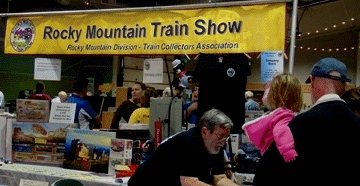
Some Book Learnin'
Steam Locomotive - Definition*
A steam locomotive is a type of railway locomotive that produces its pulling power through a steam engine. These locomotives are fuelled by burning combustible material, usually coal, wood, or oil, to produce steam in a boiler.
The steam moves reciprocating pistons which are mechanically connected to the locomotive's main wheels (drivers). Both fuel and water supplies are carried with the locomotive, either on the locomotive itself or in wagons (tenders) pulled behind.

*Wikipedia
A steam locomotive is a type of railway locomotive that produces its pulling power through a steam engine. These locomotives are fuelled by burning combustible material, usually coal, wood, or oil, to produce steam in a boiler.
The steam moves reciprocating pistons which are mechanically connected to the locomotive's main wheels (drivers). Both fuel and water supplies are carried with the locomotive, either on the locomotive itself or in wagons (tenders) pulled behind.

*Wikipedia
About Toy Trains
Toy trains are for kids of all ages! While real trains go back to the advent of the Industrial Revolution in the early 1800s, toy trains emerged later. Wooden and metal toys resembling trains were first made in Europe in the 1860s.
Today, many of the Baby Boomers have embraced toy train collecting and operating. They can be seen in basements, at Christmas exhibits, running in gardens, in special displays, and at Train Shows. Many toy trains today feature the latest in authentic sound and electronic control features.

Toy trains are for kids of all ages! While real trains go back to the advent of the Industrial Revolution in the early 1800s, toy trains emerged later. Wooden and metal toys resembling trains were first made in Europe in the 1860s.
Today, many of the Baby Boomers have embraced toy train collecting and operating. They can be seen in basements, at Christmas exhibits, running in gardens, in special displays, and at Train Shows. Many toy trains today feature the latest in authentic sound and electronic control features.

Typical Toy Train Gauges/Scales
| Type | Scale | Distance Between Rails | Lengtd of 50 foot Boxcar |
| Z | 1/220 | 6.6 mm | 2 3/4" |
| N | /160 | 9.0mm | 3 3/4" |
| HO | 1/87 | 16.5mm | 6 7/8" |
| S | 1/64 | 7/8" | 9 3/8" |
| O | 1/48 | 1 1/4" | 12 1/2" |
| 1 | 1/32 | 1 3/4" | 1 3/4" |
| G | 1/22.5 | 1 3/4" | 26 5/8" |
| Std | 1/27 | 2 1/8" | 22 1/4" |
| Often used
interchangeably, "gauge" refers to the distance
between the main rails, while "scale" refers to the
ratio of the model to the real thing. ~~ There are other variations .~~ |
|||
Diesel Locomotive - Definition*s
A diesel locomotive is a type of railway locomotive in which the prime mover is a diesel engine. Several types of diesel locomotives have been developed, differing mainly in the means by which mechanical power is conveyed to the driving wheels.

*Wikipedia
A diesel locomotive is a type of railway locomotive in which the prime mover is a diesel engine. Several types of diesel locomotives have been developed, differing mainly in the means by which mechanical power is conveyed to the driving wheels.

*Wikipedia